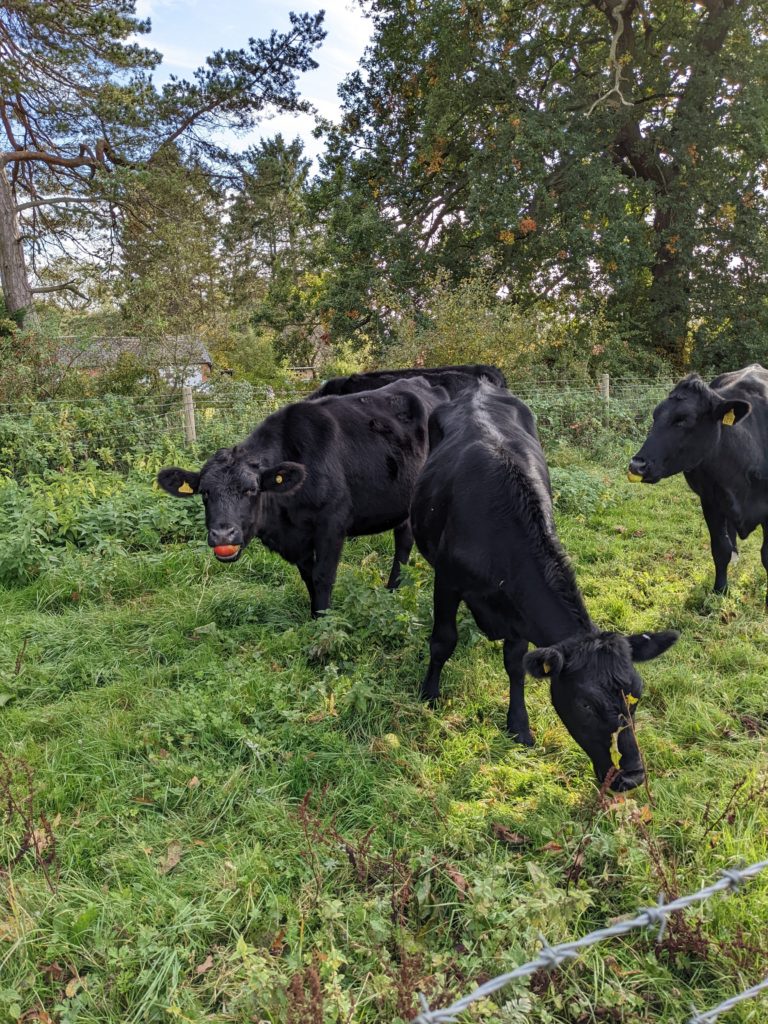The blossom on the first seedling to produce flowers has opened. Some sixty-ish seedlings are NOT flowering, and vary between Nothing and Lots Of Leaves. But this Gala pippin is giving it a good go. Here’s a photo from a couple of days ago.
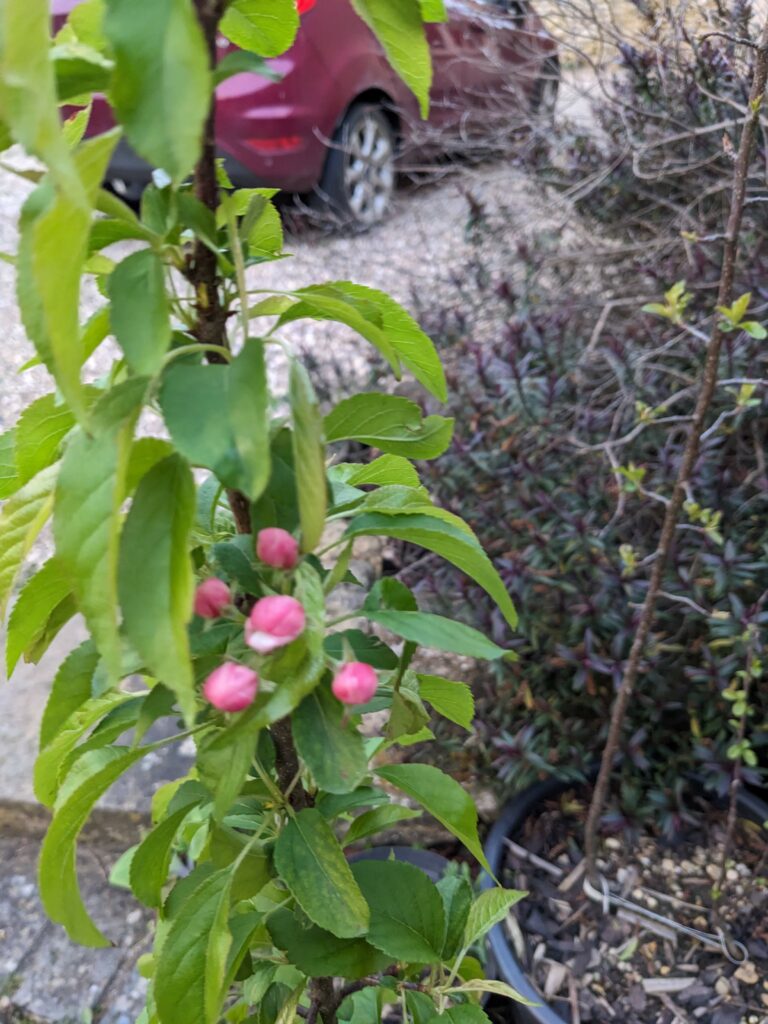
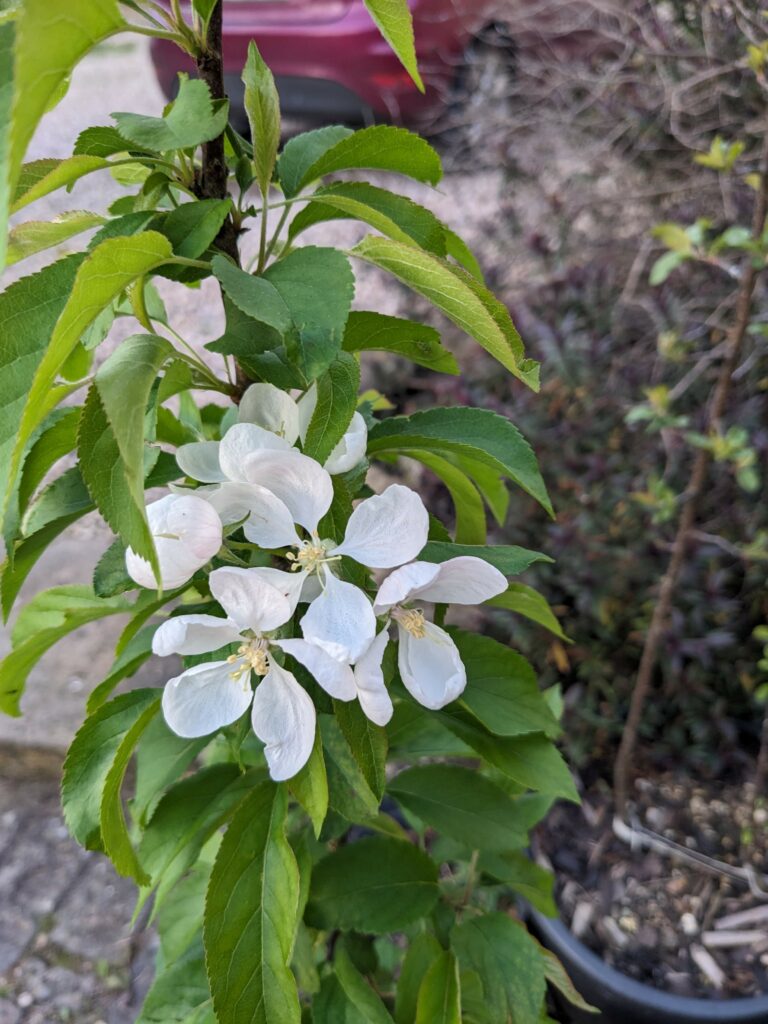
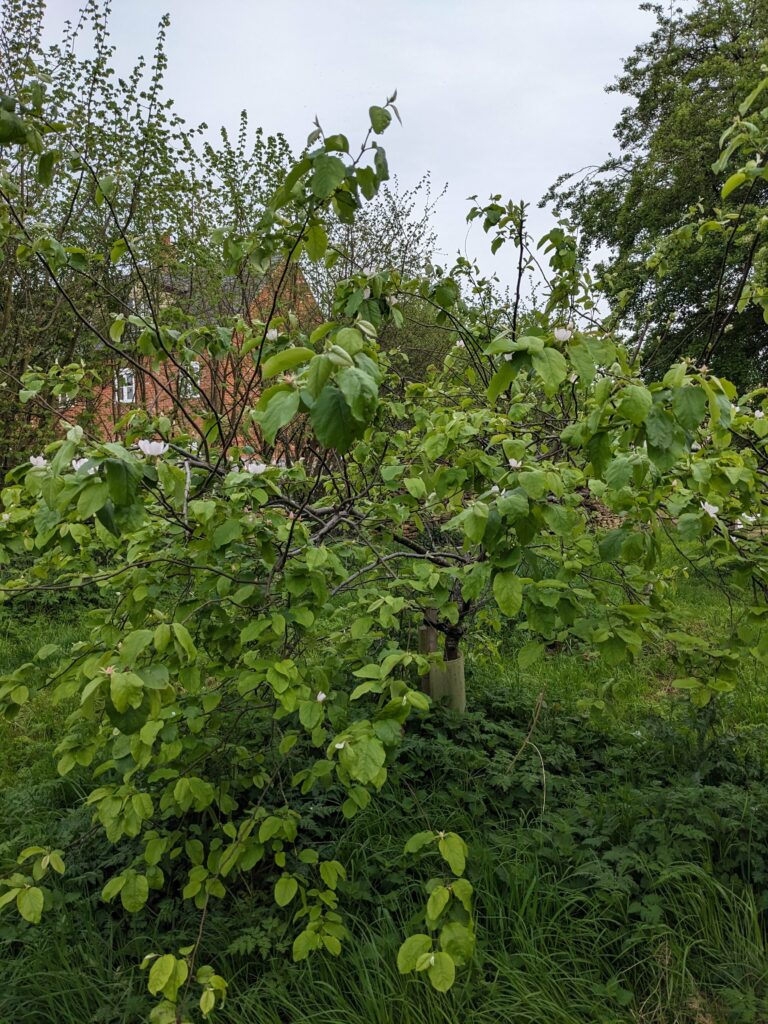
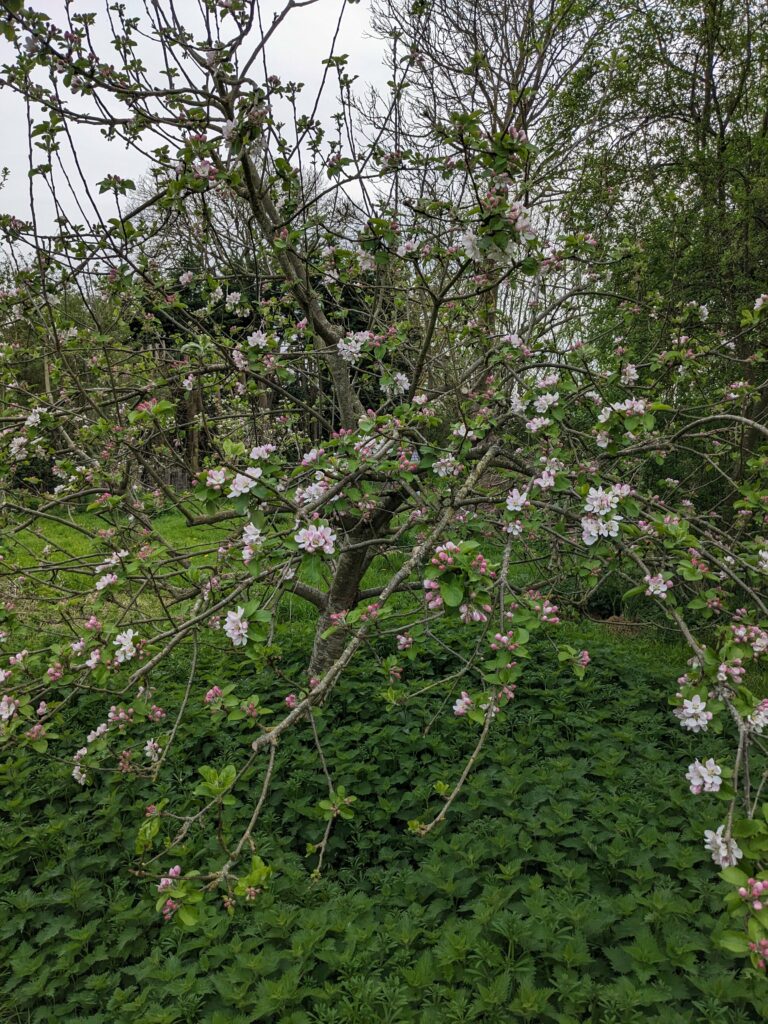
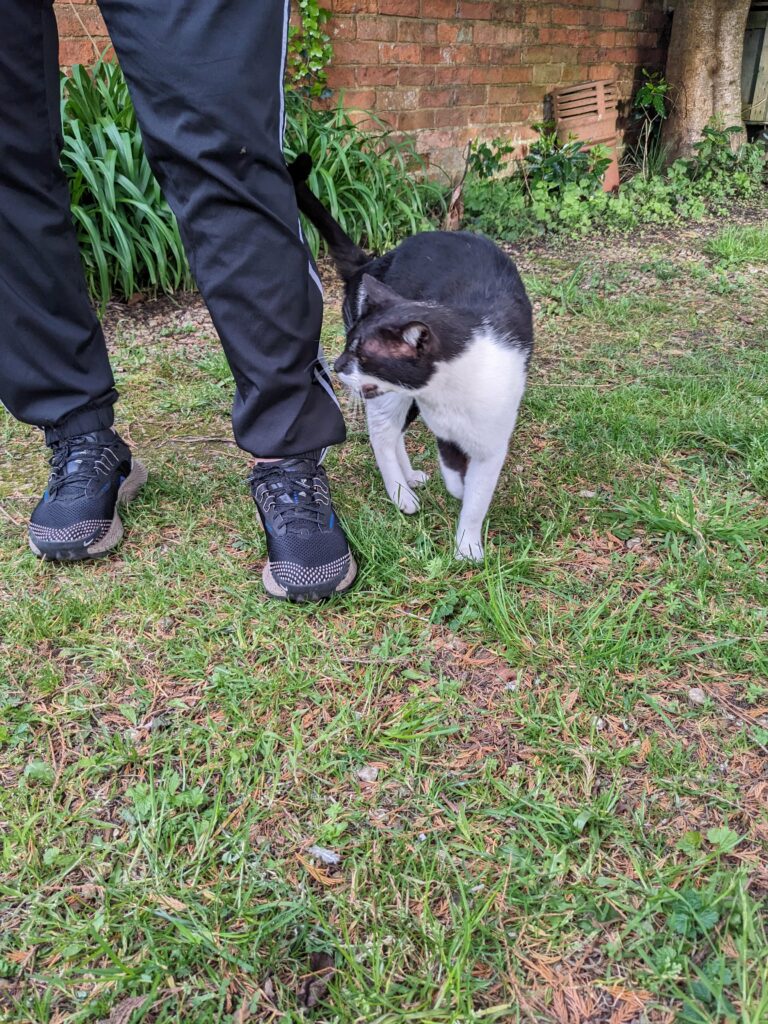
The blossom on the first seedling to produce flowers has opened. Some sixty-ish seedlings are NOT flowering, and vary between Nothing and Lots Of Leaves. But this Gala pippin is giving it a good go. Here’s a photo from a couple of days ago.





The apple harvest continues with Al bravely venturing up a ladder to pick the best of the Bramleys which we sorted and laid carefully in the apple store, on most inauthentic sheets of newspaper. We also picked the best eaters from the old tree in the orchard, which we have gradually restored to “tree shaped” after years of it being driven northwards in a quest for light which was occluded by a dark wall of leilandii.
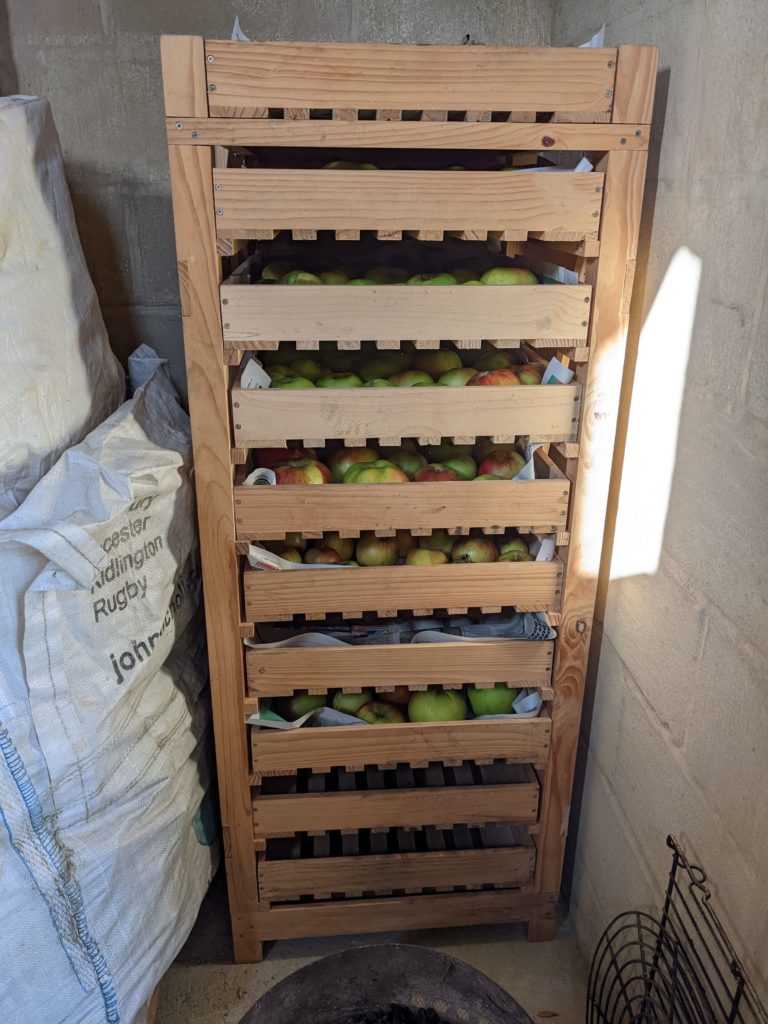
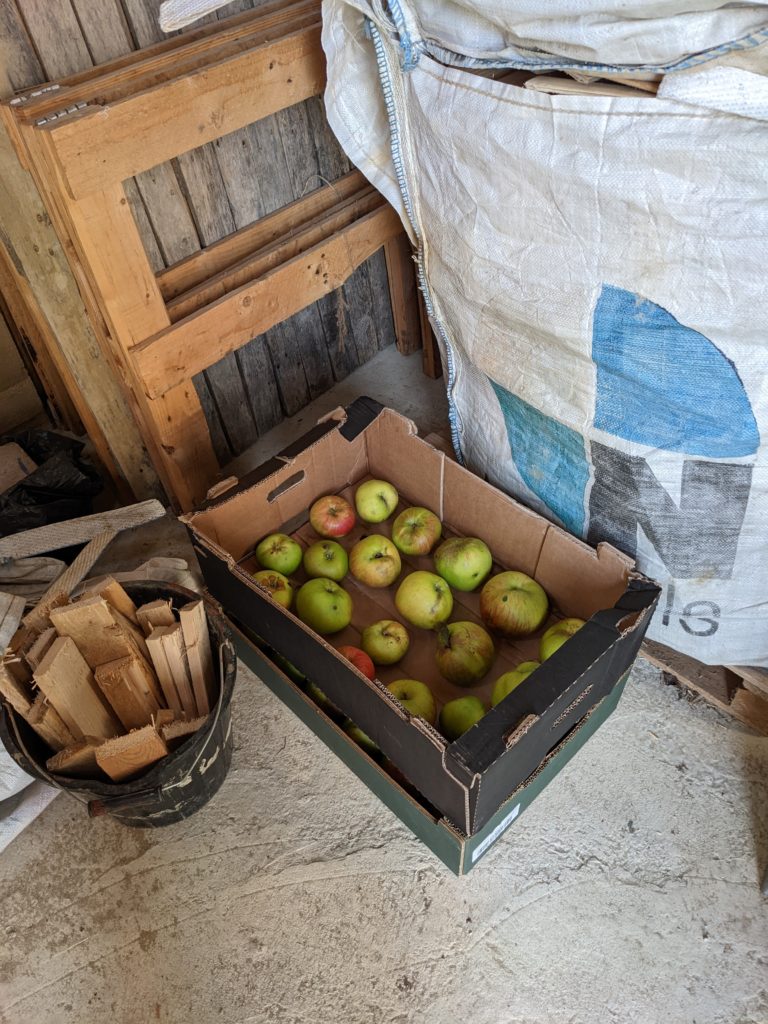
I also picked the three “Hambledon Deux Ans” apples, the first fruit we’ve seen on the tree, which was planted in 2018. Creating an orchard is a slow game. I have not yet eaten any of them; they are supposed to be a very good keeper, so I should eat one now and then leave the others for some months at least.
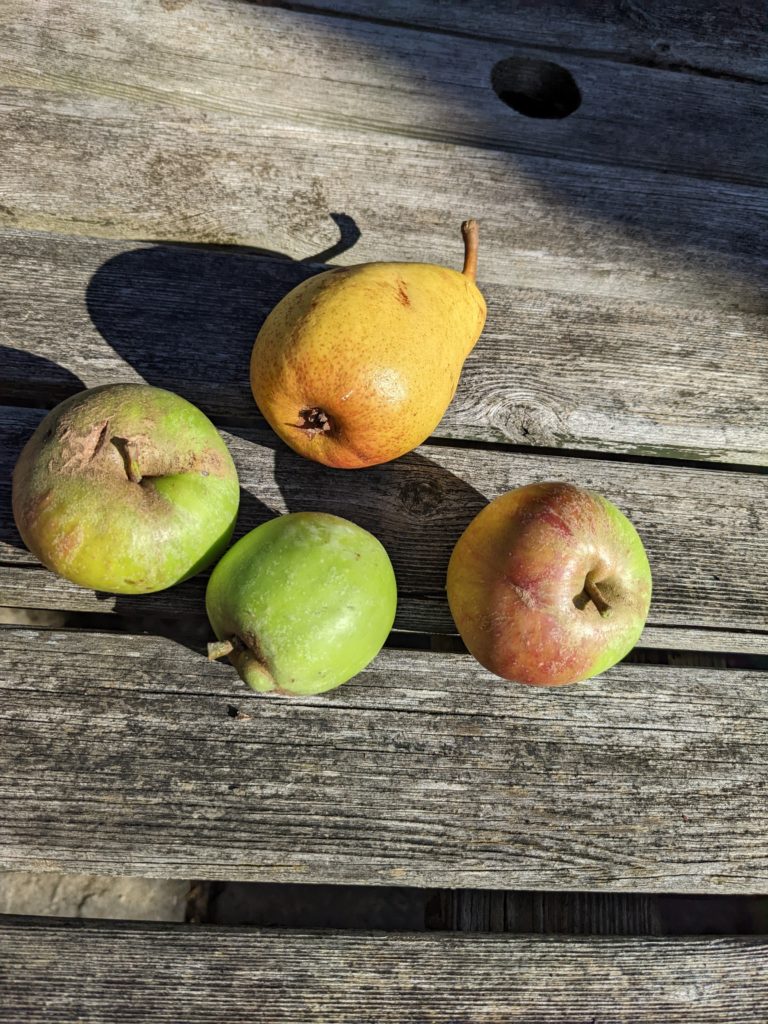
The Louise Bonne of Jersey gave us half a dozen or so good pears this year; it seems to be quite biennial already so I’m glad to have put in a couple more pear trees this year.
Another first for the year is that our “Portugal” quince, planted May 2018, produced five quinces! Last year there was one very shrivelled and unappealing fruit, so this is a great step forward. I harvested them, peeled and poached them in a light syrup. They have a surprising orange fragrance.
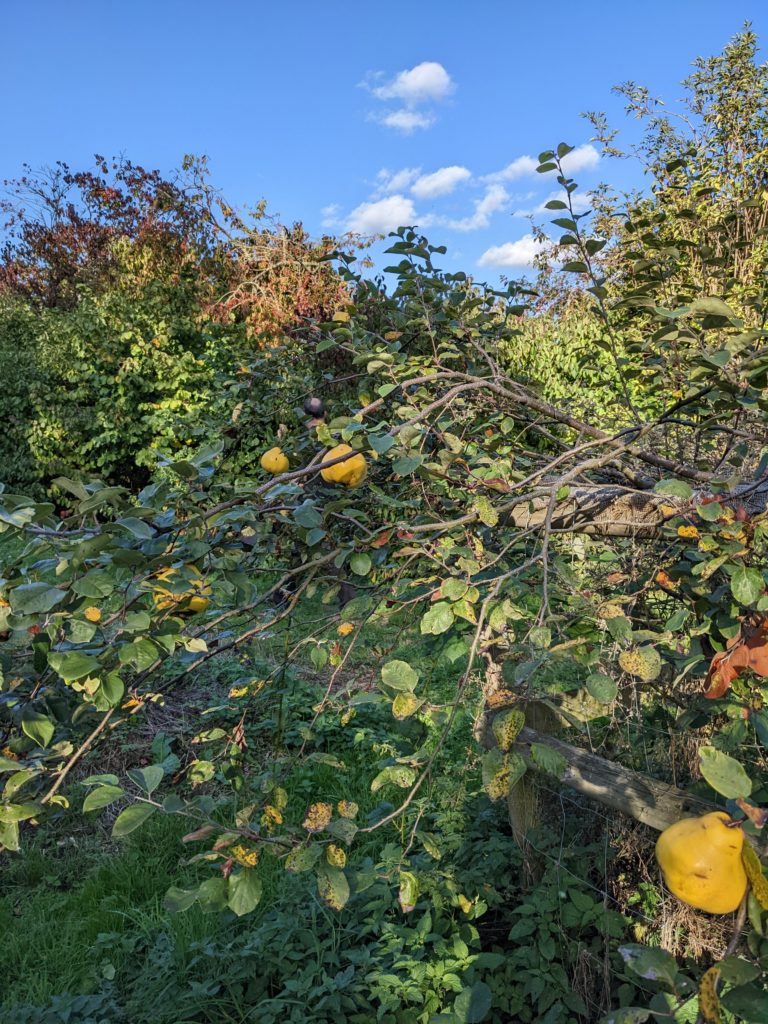
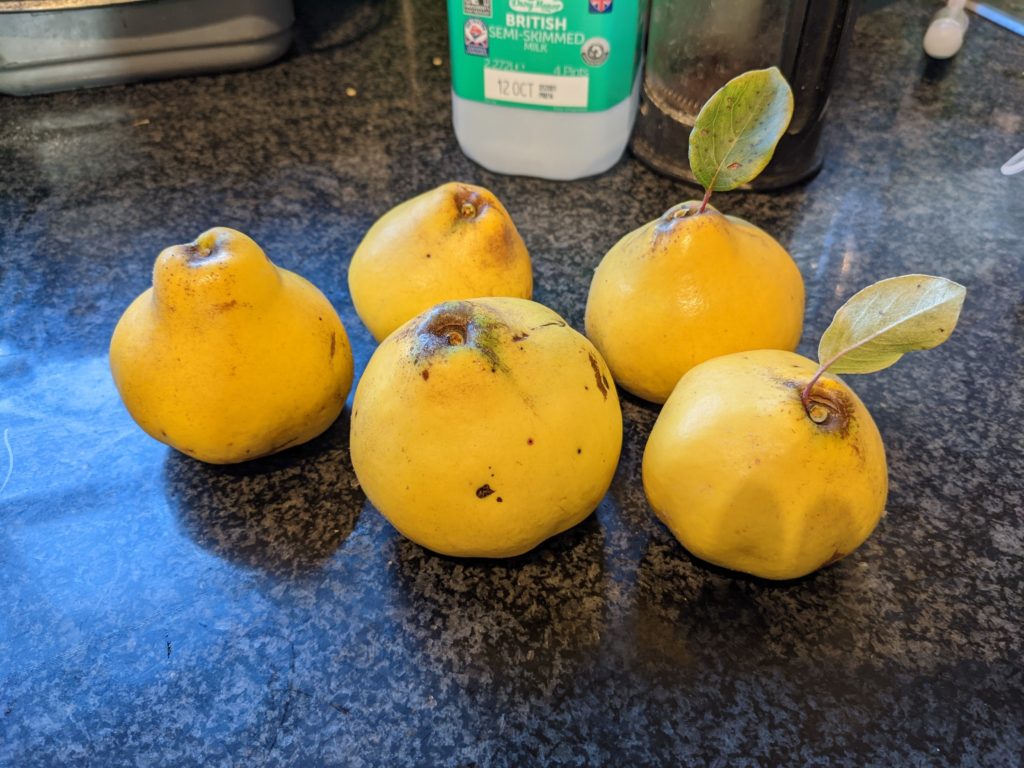
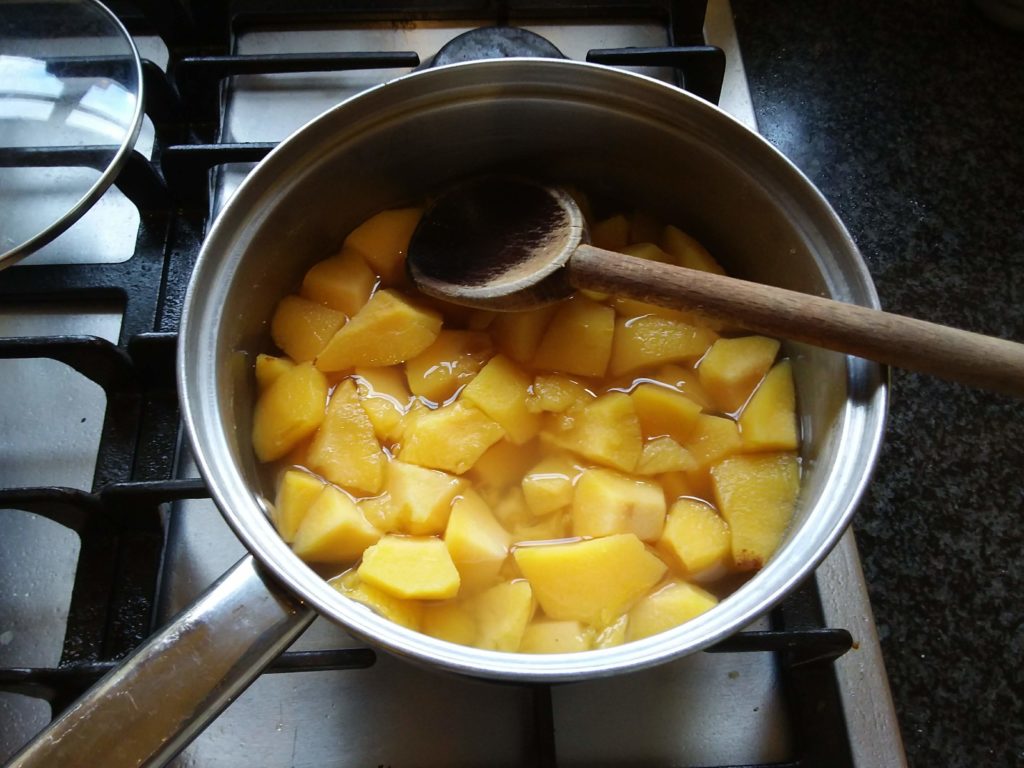
The flavour of quince is…interesting. It’s not unpleasant, but a bit like mango I am unused to it and it’s strange to me. This variety was quick to cook and I found some interesting information about the quince in wikipedia.
The quince is another fruit, like the medlar, which may be rendered edible by “bletting” – softening by frost and subsequent decay. They are commonly cooked, being hard and astringent when raw, and the term “marmalade” originally meant a quince jam, being derived from the Portugese word for the fruit, marmelo.
The quince is traditionally used to treat digestive disorders and may reduce symptoms of early pregnancy such as vomiting and nausea; a 2016 article outlines a wealth of possible pharmaceutical uses of the fruit and seeds.
I leave you with a photo of the cattle on Lake Meadow, who kindly agreed to dispose of the windfalls that I can’t be bothered to process.
